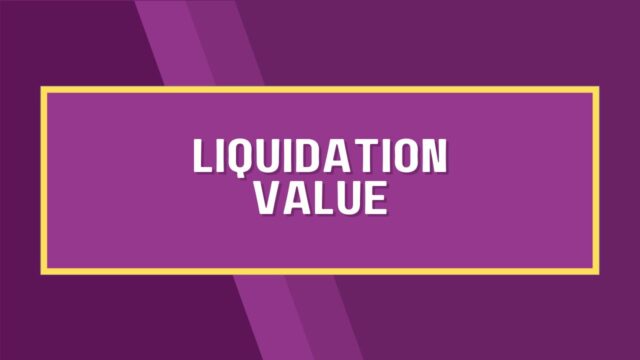
A liquidation value is a likely price for an asset when it does not have enough time to sell on the open market. This price will reduce the exposure of the asset to potential buyers, and is often lower than its fair market value. This value may also be known as Salvage value. This type of value may be used when calculating the liquidation value of preferred stock.
Here are some examples of liquidation values:
Orderly liquidation value is the amount assets will generate if disposed of in the normal course of business
The liquidation value of an asset varies depending on the circumstances of its disposition. For example, if the business owner decides to sell off all of its assets, the liquidation value may be lower than the book value or higher than the salvage value. However, the liquidated assets still retain some value and must be sold quickly. In a recent example, the shoe retailer Payless filed for bankruptcy. It once operated 3,400 stores in 40 countries. In announcing their bankruptcy, the company announced that all of its U.S. locations would be closed.
The liquidation value is the difference between a company’s tangible assets and its liabilities. Let’s say company A has liabilities of $550,000 and book value of $1 million, with salvage value of $50,000. If the company can sell all of its assets at an auction for $750,000, the liquidation value is 75 cents on the dollar. Liquidation value is calculated by deducting the liabilities from the auction value.
Salvage value is the asset’s estimated value at the end of its useful life
If an asset is no longer used or has expired, it may be worth less than its current price. This value is often called the salvage value. If the asset was purchased at a bargain price, it may be worth more than its current value at the end of its life. For example, a $1,000,000 asset has a 10-year useful life and may be worth less than its current cost if it is simply scrapped. If the asset is disposed of properly, the business would be able to collect the proceeds.
The estimated value of salvaged assets is often used as a basis for determining tax depreciation. The salvage value of an asset is its estimated value at the end of its useful life. The value is also adjusted to reflect a number of other factors. In this example, a paper manufacturer buys a new boiler to steam wood chips. Its previous boiler lasted for 25 years. The asset management team might determine that the new boiler would have a similar useful life.
Net orderly liquidation value does not include intangible assets
The net orderly liquidation value of a business is the amount it would generate if it were to sell all of its assets in a normal course of business. It excludes the cost of liquidation, marketing, and inspection, and is usually calculated by the Administrative Agent. A business’s assets are generally worth their replacement costs, which represent the price of duplicating them at current market prices.
A company’s liquidation value is the sum of all its tangible assets, including real estate, fixtures, equipment, and inventory. The value does not include intangible assets, such as intellectual property, goodwill, brand recognition, and customer lists. The net orderly liquidation value is the value a company would get from a liquidation of all its assets, as compared to its market cap. However, before a potential investor invests in a company, they examine its liquidation value. This gives them an idea of what they would receive if the company declared bankruptcy.
Calculating liquidation value for preferred stock
If you have preferred stock, the liquidation value is the amount of money you will receive as dividends before common stock holders. It also determines the priority of claims by creditors and stockholders. You should always consult the term sheet for details. However, there are some factors to consider before calculating the liquidation value of your preferred stock. Read on to learn more. This article will help you calculate the liquidation value of your preferred stock.
Before you invest in preferred stock, you must understand the risks and benefits of doing so. It is possible that your preferred stock will have a call date that is beyond its liquidation date. This means that if you pay more than the liquidation value of your preferred stock, you may be at risk of losing your initial investment, but you can collect a higher yield while waiting for the call date. It is advisable to plan ahead so you can avoid this risk.


































